- Home
- Haruki Murakami
Underground: The Tokyo Gas Attack and the Japanese Psyche
Underground: The Tokyo Gas Attack and the Japanese Psyche Read online
CONTENTS
Map of the Tokyo Subway
PART ONE
UNDERGROUND
Preface
TOKYO METROPOLITAN SUBWAY:
CHIYODA LINE
Kiyoka Izumi: Nobody was dealing with things calmly
Masaru Yuasa: I’ve been here since I first joined
Minoru Miyata: At that point Takahashi was still alive
Toshiaki Toyoda: I’m not a sarin victim, I’m a survivor
Tomoko Takatsuki: It’s not even whether or not to take the subway, just to go out walking scares me now
Mitsuteru Izutsu: The day after the gas attack, I asked my wife for a divorce
Aya Kazaguchi: Luckily I was dozing off
Hideki Sono: Everyone loves a scandal
TOKYO METROPOLITAN SUBWAY:
MARUNOUCHI LINE (Destination: Ogikubo)
Mitsuo Arima: I felt like I was watching a program on TV
Kenji Ohashi: Looking back, it all started because the bus was two minutes early
Soichi Inagawa: That day and that day only I took the first door
Sumio Nishimura: If I hadn’t been there, somebody else would have picked up the packets
Koichi Sakata: I was in pain, yet I still bought my milk as usual
Tatsuo Akashi: The night before the gas attack, the family was saying over dinner, “My, how lucky we are”
Shizuko Akashi: “Ii-yu-nii-an [Disneyland]”
TOKYO METROPOLITAN SUBWAY:
MARUNOUCHI LINE (Destination: Ikebukuro)
Shintaro Komada: “What can that be?” I thought
Ikuko Nakayama: I knew it was sarin
TOKYO METROPOLITAN SUBWAY:
HIBIYA LINE (Departing: Naka-meguro)
Hiroshige Sugazaki: “What if you never see your grandchild’s face?”
Kozo Ishino: I had some knowledge of sarin
Michael Kennedy: I kept shouting, “Please, please, please!” in Japanese
Yoko Iizuka: That kind of fright is something you never forget
TOKYO METROPOLITAN SUBWAY:
HIBIYA LINE (Departing: Kita-senju; Destination: Naka-meguro)
Noburu Terajima: I’d borrowed the down payment, and my wife was expecting—it looked pretty bad
Masanori Okuyama: In a situation like that the emergency services aren’t much help at all
Michiaki Tamada: Ride the trains every day and you know what’s regular air
TOKYO METROPOLITAN SUBWAY: Hibiya Line
Takanori Ichiba: Some crazy’s probably sprinkled pesticides or something
Naoyuki Ogata: We’ll never make it. If we wait for the ambulance we’re done for
Michiru Kono: It’d be pathetic to die like this
Kei’ichi Ishikura: The day of the gas attack was my sixty-fifth birthday
TOKYO METROPOLITAN SUBWAY: KODEMMACHO STATION
Ken’ichi Yamazaki: I saw his face and thought: “I’ve seen this character somewhere”
Yoshiko Wada, widow of Eiji Wada: He was such a kind person. He seemed to get even kinder before he died
Kichiro and Sanae Wada, parents of Eiji Wada:
He was an undemanding child
Koichiro Makita: Sarin! Sarin!
Dr. Toru Saito: The very first thing that came to mind was poison gas—cyanide or sarin
Dr. Nobuo Yanagisawa: There is no prompt and efficient system in Japan for dealing with a major catastrophe
BLIND NIGHTMARE: WHERE ARE WE JAPANESE GOING?
PART TWO
THE PLACE THAT WAS PROMISED
Preface
Hiroyuki Kano: I’m still in hum
Akio Namimura: Nostradamus had a great influence on my generation
Mitsuharu Inaba: Each individual has his own image of the Master
Hajime Masutani: This was like an experiment using human beings
Miyuki Kanda: In my previous life I was a man
Shin’ichi Hosoi: “If I stay here,” I thought, “I’m going to die”
Harumi Iwakura: Asahara tried to force me to have sex with him
Hidetoshi Takahashi: No matter how grotesque a figure Asahara appears, I can’t just dismiss him
About the Author
Other Books By This Author
Also By Haruki Murakami
Map of the Tokyo subway showing the lines targeted in the gas attack, Monday March 20, 1995
PART ONE
UNDERGROUND
Preface *
Leafing through a magazine one afternoon, I found myself looking at the readers’ letters page. I really don’t remember why; I just probably had time on my hands. I rarely ever pick up Ladies’ Home Journal or the like, much less read the letters page.
However, one of the letters caught my attention. It was from a woman whose husband had lost his job because of the Tokyo gas attack. A subway commuter, he had been unfortunate enough to be on his way to work in one of the cars in which the sarin gas was released. † He passed out and was taken to hospital. But even after several days’ recuperation, the aftereffects lingered on, and he couldn’t get himself back into the working routine. At first, he was tolerated, but as time went on his boss and colleagues began to make snide remarks. Unable to bear the icy atmosphere any longer, feeling almost forced out, he resigned.
The magazine has since disappeared, so I can’t quote the letter exactly, but that was more or less what it said. As far as I can recall, there was nothing particularly plaintive about it, nor was it an angry rant. If anything, it was barely audible, a grumble under the breath. “How on earth did this happen to us … ?” she wonders, still unable to accept what had out of the blue befallen her family.
The letter shocked me. Here were people who still carried serious psychological scars. I felt sorry, truly sorry, although I knew that for the couple involved my sympathy was irrelevant. And yet, what else could I do?
Like most people, I’m sure, I simply turned the page with a sigh.
But sometime later I found myself thinking about the letter. That “How on earth … ?” stuck in my head like a big question mark. As if it weren’t enough to be the victim of purely random violence, the man had suffered “secondary victimization” (everyday corporate violence of the most pervasive kind). Why could nobody do anything about it? That’s when I began to piece together a very different picture.
Whatever the reason, his colleagues had singled out this young salaryman—“Hey, there’s the guy from that weird attack”—it couldn’t have made any sense to him. He was probably quite unaware of their “them-and-us” attitude. Appearances were deceptive. He would have considered himself a dyed-in-the-wool Japanese like everyone else.
I grew curious to learn more about the woman who wrote in about her husband. Personally, I wanted to probe deeper into how Japanese society could perpetrate such a double violence.
Soon after that I decided to interview the survivors of the attack.
The interviews were conducted over nearly a year between the beginning of January and the end of December 1996. Most sessions took one or two hours, but some lasted for as long as four hours. I recorded everything.
The tapes were then transcribed, which naturally generated a huge volume of text, much of which digressed this way and that, lost the thread completely, then pulled back into focus. Just like everyday speech. This was edited, reordered, or rephrased where necessary to make it more readable, and generally worked up into a manageable book-length manuscript. Occasionally, when the transcript seemed to lack something, I had to go back and listen to the original tape.
Only once did anyone refuse to be recorded. Although
I had mentioned over the phone that I’d be recording the interview, when I pulled a tape recorder out of my bag the interviewee claimed not to have been told. I spent the next two hours jotting down names and figures in longhand, then another few hours writing up the interview the moment I got home. (I was actually rather impressed that my own all-too-human powers of recall could reproduce an entire conversation from a handful of notes—no doubt daily fare to professional interviewers, but new to me.) Still, in the end I wasn’t granted permission to include this interview in the book, so all my labors came to nothing.
Two assistants, Setsuo Oshikawa and Hidemi Takahashi, helped me track down the interviewees. We used one of two methods: scanning all previous media sources for listings of “Tokyo gas attack victims”; or asking around by word-of-mouth if anyone knew someone who’d been gassed. Quite frankly, this proved more difficult than I expected. So many passengers were on the Tokyo subway that day, I told myself, getting statements would be easy; after all, there was no formal legal ban on “external testimonies” during the trial, except as concerned the court or police investigations. They had a duty to protect people’s privacy, and the same went for the hospitals. All we had to go on were newspaper listings of the hospitalized from the day of the gas attack itself. Names only; no addresses or telephone numbers.
Somehow we came up with a list of 700 names, of whom only 20 percent were identifiable. How does one go about tracing an “Ichiro Nakamura”—the Japanese equivalent of “John Smith”? Even when we did manage to contact the 140 or so positive identifications, they usually refused to be interviewed, saying “I’d rather forget the whole incident” or “I don’t want to have anything to do with Aum” or “I don’t trust the media.” I can’t tell you how often people slammed down the phone at the mere mention of publication. As a result, only about 40 percent of the 140 consented to be interviewed.
After the arrest of the principal members of the Aum cult, fewer people feared retributions, but still the rejections persisted—“My symptoms aren’t really serious, so it’s not worth making a statement.” Or, in more than one case, the survivors themselves were willing but their families were not—“Don’t get all of us involved.” Testimonies from public servants and the employees of financial institutions were likewise unforthcoming.
For practical reasons there are also relatively few female interviewees, because they proved harder to trace by name alone. Unmarried young women in Japan—and this is pure conjecture on my part—don’t appreciate strangers asking too many questions. Nevertheless, some did respond “despite family opposition.”
Thus, out of thousands of victims, we found only sixty willing respondents, and that took a huge amount of dedication.
In the process of shaping the written interviews, drafts were sent to the respective interviewees for fact-checking. I attached a note asking them to let me know if there was anything they “didn’t wish to see in print” and how the contents should be altered or abridged. Almost everyone asked for some changes or cuts, and I complied. Often the forfeited material had illuminated details about the interviewees’ lives, which I, as a writer, was sorry to lose. Occasionally I came back with a counterproposal for them to approve. Some interviews went back and forth as many as five times. Every effort was made to avoid any exploitative mass-media scenario that might leave disgruntled interviewees shaking their heads, saying, “It wasn’t supposed to be like this” or “You betrayed my trust.” Things took time.
After such delicate and laborious orchestrations, we had a total of sixty-two interviews. However, as stated previously, there were two last-minute withdrawals, both very incisive, telling testimonies. Discarding the finished texts so late in the game, I honestly felt as though I were cutting away parts of my own flesh, but “No” means “No,” especially when we had made clear from the start our intention to respect each individual voice.
Put another way, every remark in this book is a completely voluntary contribution. And by way of final confirmation—I am very pleased and grateful to say—almost everyone agreed to use his or her real name, which adds incalculably greater impact to the words: their words, their anger, their accusations, their sufferings … (this is not to slight those few who adopted pseudonyms, for whatever personal reasons).
At the beginning of every interview I would ask the interviewees about their background—where they were born, their upbringing, their family, their job (especially their job)—in order to give each a “face,” to bring them into focus. What I did not want was a collection of disembodied voices. Perhaps it’s an occupational hazard of the novelist’s profession, but I am less interested in the “big picture,” as it were, than in the concrete, irreducible humanity of each individual. So perhaps I devoted an inordinate proportion of each two-hour interview to seemingly unrelated details, but I wanted to make sure readers had a firm grasp of the “character” speaking. Much of this extra dimension did not, of course, survive into print.
The Japanese media had bombarded us with so many in-depth profiles of the Aum cult perpetrators—the “attackers”—forming such a slick, seductive narrative that the average citizen—the “victim”—was almost an afterthought. “Bystander A” was glimpsed only in passing. Very rarely was any “lesser” narrative presented in a way that commanded attention. Those few stories that got through were contextualized into formulaic glosses. Our media probably wanted to create a collective image of the “innocent Japanese sufferer,” which is much easier to do when you don’t have to deal with real faces. Besides, the classic dichotomy of “ugly (visible) villains” versus the “healthy (faceless) populace” makes for a better story.
Which is why I wanted, if at all possible, to get away from any formula; to recognize that each person on the subway that morning had a face, a life, a family, hopes and fears, contradictions and dilemmas—and that all these factors had a place in the drama.
Once I’d discovered the real person, I could then shift my focus to the events themselves. “What was the day like for you?,” “What did you see/experience/feel?,” and, if it seemed appropriate, “In what way did you suffer (physically or mentally) because of the gas attack?” and “Did these problems persist?”
The degree of suffering inflicted by the Tokyo gas attack varied considerably from person to person. Some escaped with little actual harm; those less fortunate died or are still undergoing therapy for serious health problems. Many experienced no major symptoms at the time, but have since developed posttraumatic stress disorders.
I interviewed people even if they were virtually unaffected by the sarin gas. Naturally those who escaped with relatively slight injury had been able to return to everyday life more quickly, but they, too, had their own stories to tell. Their fears, their lessons. In this sense, I did not practice any sort of editorial “triage.” *
One cannot overlook someone simply because they exhibit only “minor symptoms.” For everyone involved in the gas attack, March 20 was a heavy, grueling day.
Furthermore, I had a hunch that we needed to see a true picture of all the survivors, whether they were severely traumatized or not, in order to better grasp the whole incident. I leave it to you, the reader, to lend an ear, then judge. No, even before that, I’d like you to imagine.
The date is Monday March 20, 1995. It is a beautiful clear spring morning. There is still a brisk breeze and people are bundled up in coats. Yesterday was Sunday, tomorrow is the Spring Equinox, a national holiday. Sandwiched right in the middle of what should have been a long weekend, you’re probably thinking, “I wish I didn’t have to go to work today.” No such luck. You get up at the normal time, wash, dress, breakfast, and head for the subway station. You board the train, crowded as usual. Nothing out of the ordinary. It promises to be a perfectly run-of-the-mill day. Until a man in disguise pokes at the floor of the car with the sharpened tip of his umbrella, puncturing some plastic bags filled with a strange liquid …
* I would like to make clear that I borrowed us
eful ideas toward the composition of this book from the works of Studs Terkel and Bob Greene.
† Sarin is a nerve gas invented by German scientists in the 1930s as part of Adolf Hitler’s preparations for World War II. During the 1980s it was used to lethal effect by Iraq, both in the war against Iran and against the Kurds. Twenty-six times as deadly as cyanide gas, a drop of sarin the size of a pinhead is sufficient to kill a person. [Tr.]
* See this page [Tr.]
TOKYO METROPOLITAN SUBWAY: CHIYODA LINE
TRAIN A725K
Two men were assigned to drop sarin gas on the Chiyoda Line: Ikuo Hayashi and Tomomitsu Niimi. Hayashi was the principal criminal, Niimi the driver-accomplice.
Why Hayashi—a senior medical doctor with an active “frontline” track record at the Ministry of Science and Technology—was chosen to carry out this mission remains unclear, but Hayashi himself conjectures it was to seal his lips. Implication in the gas attack cut off any possibility of escape. By this point Hayashi already knew too much. He was devoted to the Aum cult leader Shoko Asahara, but apparently Asahara did not trust him. When Asahara first told him to go and release the sarin gas Hayashi admitted: “I could feel my heart pounding in my chest—though where else would my heart be?”
Boarding the front car of the southwestbound 7:48 A.M. Chiyoda Line, running from the northeast Tokyo suburb of Kita-senju to the western suburb of Yoyogi-uehara, Hayashi punctured his plastic bag of sarin at Shin-ochanomizu Station in the central business district, then left the train. Outside the station, Niimi was waiting with a car and the two of them drove back to the Shibuya ajid—Aum local headquarters—their mission accomplished. There was no way for Hayashi to refuse. “This is just a yoga of the Mahamudra,” he kept telling himself, Mahamudra being a crucial discipline for attaining the stage of the True Enlightened Master.
When asked by Asahara’s legal team whether he could have refused if he had wanted to, Hayashi replied: “If that had been possible, the Tokyo gas attack would never have happened.”

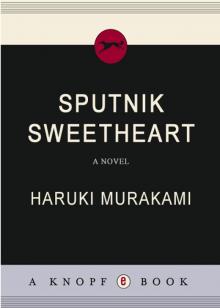 Sputnik Sweetheart
Sputnik Sweetheart Dance Dance Dance
Dance Dance Dance The Wind (1) and Up Bird Chronicle (2)
The Wind (1) and Up Bird Chronicle (2) Blind Willow, Sleeping Woman
Blind Willow, Sleeping Woman Absolutely on Music: Conversations With Seiji Ozawa
Absolutely on Music: Conversations With Seiji Ozawa Norwegian Wood
Norwegian Wood South of the Border, West of the Sun
South of the Border, West of the Sun Kafka on the Shore
Kafka on the Shore Men Without Women
Men Without Women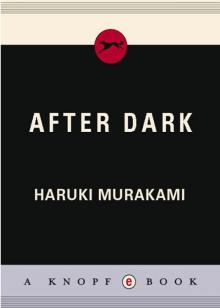 After Dark
After Dark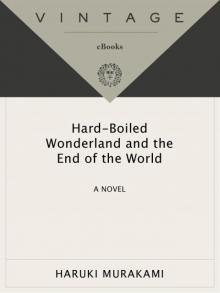 Hard-Boiled Wonderland and the End of the World
Hard-Boiled Wonderland and the End of the World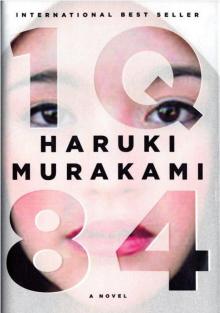 1q84
1q84 The Wind-Up Bird Chronicle
The Wind-Up Bird Chronicle Underground: The Tokyo Gas Attack and the Japanese Psyche
Underground: The Tokyo Gas Attack and the Japanese Psyche Vintage Murakami
Vintage Murakami The Elephant Vanishes: Stories
The Elephant Vanishes: Stories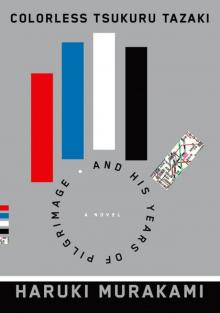 Colorless Tsukuru Tazaki and His Years of Pilgrimage
Colorless Tsukuru Tazaki and His Years of Pilgrimage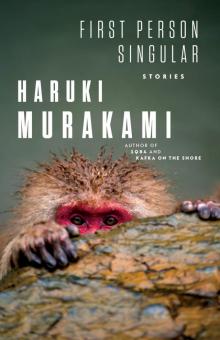 First Person Singular
First Person Singular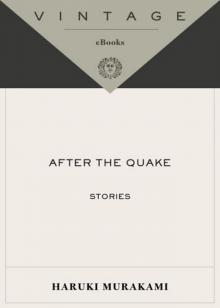 After the Quake
After the Quake A Wild Sheep Chase
A Wild Sheep Chase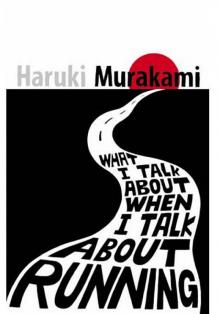 What I Talk About When I Talk About Running
What I Talk About When I Talk About Running Birthday Girl
Birthday Girl The Elephant Vanishes
The Elephant Vanishes Norwegian Wood (Vintage International)
Norwegian Wood (Vintage International) Wind/Pinball
Wind/Pinball Norwegian Wood Vol 1.
Norwegian Wood Vol 1. Underground
Underground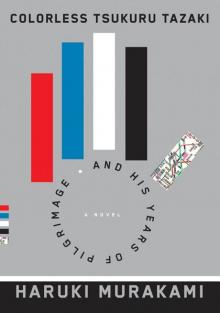 Colorless Tsukuru Tazaki and His Years of Pilgrimage: A novel
Colorless Tsukuru Tazaki and His Years of Pilgrimage: A novel Killing Commendatore
Killing Commendatore Absolutely on Music
Absolutely on Music